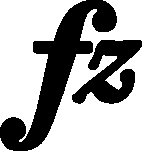



|
b. 350
|
composition: Op. 31, Scherzo in B♭ minor
..
It is difficult to interpret the slur of A, since it ends abruptly under the 3rd crotchet, which does not point to a clear ending thereof. We suggest a few possibilities. To the main text we choose the one that is most similar to the notation of an analogous place (b. 452). This is how it was interpreted in the sources based directly on A, i.e. FE and FC. category imprint: Graphic ambiguousness; Differences between sources issues: Inaccurate slurs in A |
|||||||||||
|
b. 350-351
|
composition: (Op. 4), Sonata in C minor, Mvt IV
..
The range of the A slur is musically unjustified – Chopin stopped writing it to avoid the clash with the last quavers in the bar or the category imprint: Graphic ambiguousness; Differences between sources; Editorial revisions issues: Inaccurate slurs in A , GE revisions |
|||||||||||
|
b. 351-352
|
composition: Op. 39, Scherzo in C♯ minor
..
It is not clear which beginning of the slur is definite or authentic (it is easy to find slurring inaccuracies when reading Chopin). Both solutions can be justified in musical terms by phrase structure and harmonic flow:
category imprint: Differences between sources |
|||||||||||
|
b. 351
|
composition: Op. 11, Concerto in E minor, Mvt I
..
When interpreted literally, the category imprint: Interpretations within context; Differences between sources issues: Long accents , EE revisions , Errors in EE , Sign reversal |
|||||||||||
|
b. 351
|
composition: Op. 31, Scherzo in B♭ minor
..
In the main text we give the category imprint: Graphic ambiguousness; Differences between sources issues: Inaccuracies in GE , Inaccuracies in A , Authentic corrections of FC |




 mark (see the
mark (see the 






 denotes a local dynamic climax, after which one should rather expect a diminuendo, not to mention a crescendo on one note, problematic to perform on the piano. Therefore, we are probably dealing with an inaccuracy or even a mistake. One can imagine two possibilities – the mark was misplaced (e.g. moved to the right with respect to the notation of [A]) or reversed. In the main text, we are inclined to agree with the first possibility due to a similarly distorted
denotes a local dynamic climax, after which one should rather expect a diminuendo, not to mention a crescendo on one note, problematic to perform on the piano. Therefore, we are probably dealing with an inaccuracy or even a mistake. One can imagine two possibilities – the mark was misplaced (e.g. moved to the right with respect to the notation of [A]) or reversed. In the main text, we are inclined to agree with the first possibility due to a similarly distorted  on 2nd beat in
on 2nd beat in  (cf. also the
(cf. also the